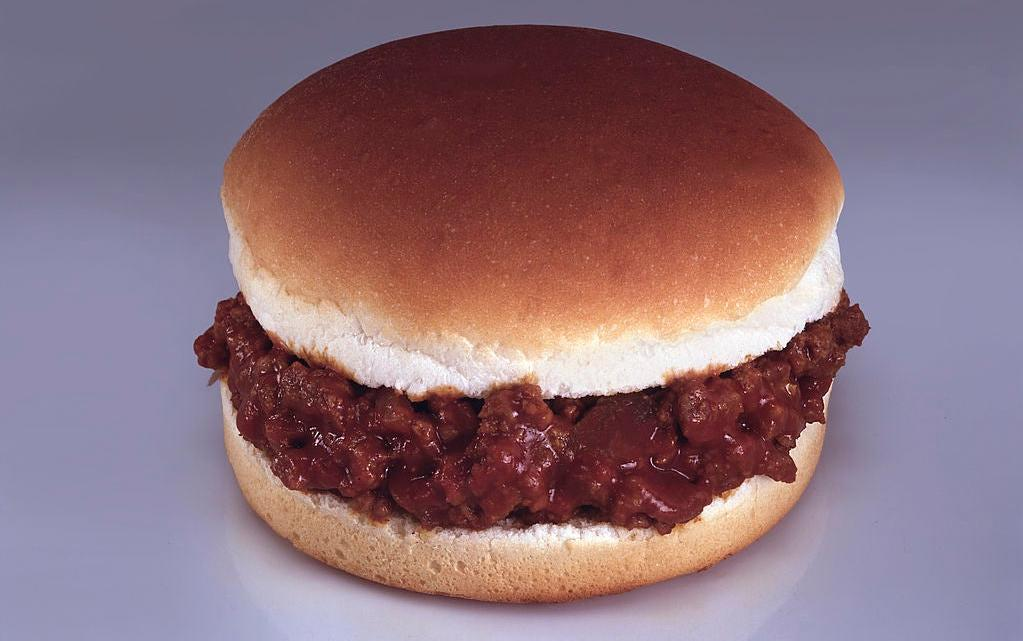Sloppy Joes Deserve Better
May your face be messy and your plate licked clean.
Sloppy Joes have always had their place in Americans' daily lives, seen mostly as cafeteria fare for children. Many families serve them as an easy weeknight dinner. But in a world of burgers and chicken sandwiches, why isn't the Sloppy Joe served at restaurants more often? Is this American classic simply too sloppy for the dinner menu?
Sloppy Joes in pop culture
In the movie Billy Madison, the lunch lady comes around haphazardly piling Sloppy Joes onto kids' plates, shouting, "I made them extra sloppy for ya!" It's a pretty weird moment that doesn't exactly make Sloppy Joes look very appetizing. (To be fair, even the very best ones don't exactly look delicious.)
Meanwhile, Sloppy Joes are painted in a somewhat more sympathetic way in the 1995 movie It Takes Two starring Mary Kate and Ashley Olsen, when one of the twins (or "identical strangers," as the movie depicts them) discovers she absolutely loves this unfamiliar "big, gooey, messy burger." After a tentative first bite, she dives right in, devouring the sandwich and covering her whole face in it.
And then, of course, there's whatever the hell this is, forever cementing the Sloppy Joe in American pop culture.
The Sloppy Joe has been around for some time, but do we even know who Joe is? Why is he so sloppy? Turns out the history behind Joe and his sandwich isn't very neat and tidy either.
The history of the Sloppy Joe
For anyone who's never had their face covered in this sweet, saucy mixture, the sandwich itself is fairly simple. A Sloppy Joe usually consists of ground meat in a tomato-based sauce containing Worcestershire sauce and/or ketchup along with a variety of seasonings and chopped onion. It's all piled on a hamburger bun, only to mostly fall out when you pick it up to take a bite.
Multiple origin stories exist for the Sloppy Joe, including one that traces it to Havana, Cuba, later brought to the United States by Ernest Hemingway, who loved the loose meat sandwich. This supposedly then led to a friend of Hemingway's named Joe Russell opening the Silver Slipper bar in Key West, Florida, in the 1930s. Hemingway persuaded Russell to change the bar's name to Sloppy Joe's, and to put the sandwich on the menu, where it remains to this day.
However, another origin story insists that the Sloppy Joe is an Iowan invention. Loose meat sandwiches were popular there in the 1920s as people looked for economical and filling meals. The theory is that a cook named Joe, of Maid-Rite in Muscatine, Iowa, thought of the idea of putting tomato sauce in with the meat and creating the Sloppy Joe.
Wherever it came from, the Sloppy Joe established itself as an easy meal to make and one kids seem to love. Unfortunately, the commercialization of Sloppy Joe mixes like Manwich and other ready-to-go, heat-and-serve sauces led to the view that the Sloppy Joe was a less than healthy meal to feed one's family. Mashed theorizes that former first lady Michelle Obama's push for healthier school lunches also gave Sloppy Joe the boot; these crowd-pleasers were painted as not so nutritious compared to other available options.
Why Sloppy Joe should be on restaurant menus
Flash forward several years, and Manwich is still on grocery store shelves. I myself made Sloppy Joes for dinner just last week. But I've never eaten anything close to a Sloppy Joe in a restaurant. In fact, other than the "original" Sloppy Joe in Key West, there aren't many places you can walk in and request an extra sloppy helping of Joe.
Interestingly, the fast food sector has attempted to give Sloppy Joes their due respect. White Castle offered Sloppy Joe Sliders as a limited-time menu item back in 2019 and again this past January. However, the fact that this sandwich is rare among fast food joints specifically is unsurprising: Eating a Sloppy Joe in the car or on the go is not ideal, considering messiness is its most identifiable quality. But that doesn't explain its absence from sit-down restaurants, where it really deserves inclusion on the menu.
Restaurant owners and diners alike should recognize the value of a Sloppy Joe. Not only is the filling quick, easy, and relatively inexpensive to make (depending on current beef prices), but it strikes a chord of nostalgia among people who grew up on the stuff. Sure, it can be messy to eat, but no more so than a lot of other American restaurant mainstays. If people are willing to chow down on a rack of ribs or classic bone-in saucy wings when they go out to eat, there's no reason a Sloppy Joe should be disqualified for its sloppiness. Restaurants have a real opportunity here to create their own signature version of the tomato sauce that keeps diners coming back. Maybe they could even change up the bun, too?
Maybe the Sloppy Joe is too wrapped up in childhood memories of cafeterias and home kitchens to make the leap to date night. Still, think about it: a "grown-up" Sloppy Joe served with your choice of side, and maybe a beer. Doesn't that sound nice? Why isn't it already a staple at your favorite local dinner spot?
